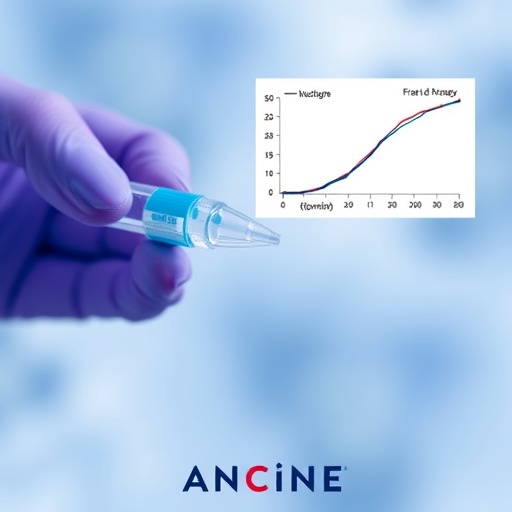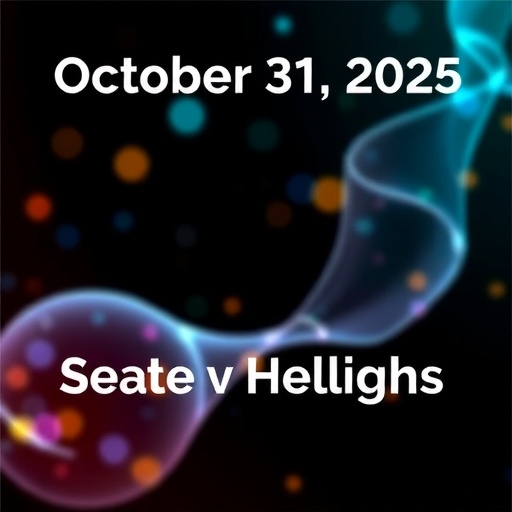In a groundbreaking comparative study published in BMC Cancer, researchers have provided compelling evidence demonstrating the superiority of axicabtagene ciloleucel (axi-cel), a novel CAR T-cell therapy, over conventional treatment regimens as a first-line therapy for patients suffering from high-risk large B-cell lymphoma (LBCL). This highly aggressive form of lymphoma, often marked by poor prognostic factors and rapid disease progression, traditionally presents significant therapeutic challenges, making effective frontline therapies a critical unmet need in oncology.
Previous clinical investigations, such as the ZUMA-12 trial, indicated promising efficacy signals for axi-cel when used as an initial treatment modality in high-risk LBCL. However, these findings were predominantly derived from single-arm studies without direct head-to-head comparisons against standard-of-care treatments, leaving clinicians uncertain about its comparative effectiveness in real-world patient populations. Addressing this gap, the current study innovatively leveraged external comparator arms derived from robust real-world datasets to benchmark axi-cel outcomes against conventional therapies.
The research team employed data from the ZUMA-12 trial for the axi-cel cohort and sourced individual patient data from the Samsung Medical Center-Lymphoma Cohort Study (SMC-LCS), covering years 2017 to 2023, to form the comparator arm receiving established lymphoma treatments. Critical to the study’s validity was the stringent application of ZUMA-12 eligibility criteria to the SMC-LCS patient population, ensuring a balanced comparison between cohorts characterized by double- or triple-hit lymphoma genetics and a high International Prognostic Index score (≥3), both indicative of particularly adverse disease biology.
To accurately assess patient outcomes, the investigators focused on two pivotal clinical endpoints: overall survival (OS), representing the duration from treatment initiation to death from any cause or last follow-up, and progression-free survival (PFS), marking the period until either disease progression or death. The extraction of survival data from Kaplan-Meier curves using advanced digitization techniques allowed for precise modelling of the axi-cel arm’s clinical trajectory. Propensity score weighting through a matching-adjusted indirect comparison (MAIC) methodology further rectified baseline differences, enabling an unbiased estimate of axi-cel’s therapeutic benefit.
The study’s results were striking. Among the 279 high-risk LBCL patients in the SMC-LCS registry, 45 met the predefined criteria aligning them closely with ZUMA-12 participants. Mortality within the axi-cel treated cohort was markedly lower, at 13.5%, compared to a 49.5% death rate observed in the weighted conventional treatment arm. This translated into an adjusted hazard ratio (aHR) for death of 0.30, indicating a 70% reduction in the risk of mortality for patients treated with axi-cel.
Even more compelling was the difference observed in progression-free survival. The axi-cel group demonstrated a median PFS that was not reached within the study timeframe, suggesting prolonged disease control, while the conventional therapy arm endured a median PFS of only 2.7 months. Statistically, axi-cel conferred a 77% reduction in the hazard for disease progression or death (aHR 0.23), highlighting its robust efficacy in sustaining remission in this high-risk population.
These findings hold significant potential to reshape clinical paradigms for frontline management of aggressive LBCL. They endorse axi-cel not simply as a salvage therapy, as historically positioned, but as a frontline strategy capable of altering the natural history of the disease in the most vulnerable patient subsets. This paradigm shift may ultimately improve long-term survival rates and quality of life for thousands of patients worldwide who face dismal prognosis under current regimens.
Moreover, the study underscores the growing utility of real-world data in oncology research. By integrating externally sourced patient cohorts with clinical trial populations, this comparative approach offers an innovative and pragmatic pathway to generate high-quality evidence, especially where randomized controlled trials may be challenging to conduct due to ethical or logistical constraints. It affirms the pivotal role of advanced biostatistical techniques such as MAIC in enhancing the interpretability and applicability of such data.
From a mechanistic perspective, axi-cel’s superiority can be attributed to its novel immunotherapeutic design, wherein patient-derived T cells are genetically engineered to express chimeric antigen receptors targeting CD19, a protein ubiquitously expressed on B-cell malignancies. This targeted approach facilitates potent, durable anti-lymphoma immune responses, overcoming resistance mechanisms that limit the efficacy of conventional cytotoxic chemotherapy and immunochemotherapy.
Looking forward, these encouraging results warrant further large-scale, prospective clinical trials to validate axi-cel’s frontline efficacy across diverse demographic and molecular subgroups. Additionally, understanding the long-term safety profile, management of unique immune-mediated adverse events, and cost-effectiveness will be essential components to inform broad clinical adoption and guideline recommendations.
The integration of axi-cel into early treatment algorithms also raises important considerations regarding sequencing with other emerging therapies including bispecific antibodies, antibody-drug conjugates, and novel small molecules. It necessitates a re-evaluation of biomarker-driven treatment selection and personalized medicine approaches in LBCL, striving to maximize patient outcomes while minimizing toxicity.
In conclusion, this externally controlled comparative effectiveness study provides robust evidence that axicabtagene ciloleucel significantly outperforms conventional frontline therapies in extending survival and controlling disease progression among patients with high-risk large B-cell lymphoma. It marks a transformative advancement in the therapeutic landscape and signals the dawn of an era where cellular immunotherapy assumes a central role early in the treatment continuum for aggressive lymphomas. This breakthrough carries profound implications for clinicians, patients, and the future of cancer care.
Subject of Research: Effectiveness of axicabtagene ciloleucel versus conventional first-line therapies in high-risk large B-cell lymphoma
Article Title: Effectiveness of axicabtagene ciloleucel versus conventional treatments as first-line therapy for high-risk large B-cell lymphoma: an external comparator study
Article References:
Kim, J.H., Bea, S., Choi, Y. et al. Effectiveness of axicabtagene ciloleucel versus conventional treatments as first-line therapy for high-risk large B-cell lymphoma: an external comparator study. BMC Cancer 25, 1681 (2025). https://doi.org/10.1186/s12885-025-15134-4
Image Credits: Scienmag.com
DOI: https://doi.org/10.1186/s12885-025-15134-4
Tags: aggressive large B-cell lymphoma treatmentAxicabtagene ciloleucel therapycancer research breakthroughsCAR T-cell therapy for lymphomacomparative study on cancer therapiesconventional vs CAR T-cell therapyefficacy of axicabtagene ciloleucelfirst-line treatment for high-risk LBCLlymphoma treatment advancementsreal-world data in oncologyunmet needs in lymphoma therapyZUMA-12 trial findings





